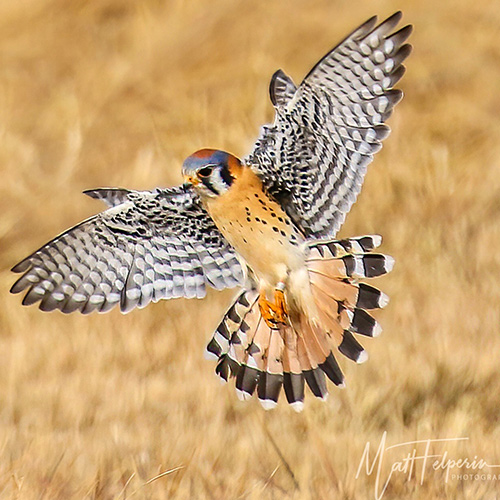This week's edition has an early summer vibe, spotlighting upcoming Smithsonian reopenings, how-tos for navigating a new world of travel, and an essential guide to birdwatching in your backyard or on a neighborhood walk.
They're among the offerings designed to make sure you continue to enjoy what you,ve come to value from Smithsonian Associates: programs and experiences that are entertaining, informative, eclectic, and insightful.
A Wider Welcome

As more and more popular attractions across the country reopen, the Smithsonian continues to follow suit. Throughout the summer ten museums and facilities on the Mall, in Washington, and in New York City will join the eight that began to welcome visitors over the spring months. Safety first is still the watchword: Free timed-entry passes are required for most museums and the zoo.
Remember that beautiful gardens-which don't require passes-are an important part of the Smithsonian's treasures. Wander through the Victorian-style Enid Haupt Garden and the contemplative Moon Gate Garden at the Castle, or take in the 13 outdoor installations in the Smithsonian-wide exhibition Habitats, which focuses on the idea that protecting habitats protects life.
View the Reopening Schedule
On the Road Again

Remember when travel was easy? The pandemic has upended the travel industry and, at least for the near future, changed the way we explore the world. Every aspect is different, from pre-trip planning to touring the destination to the return home. A Wednesday, July 28 Smithsonian Associates Streaming program is just the ticket to assist aspiring travelers. Andrea Sachs, the Washington Post's travel writer; Pauline Frommer, editorial director of Frommer's Guidebooks; and Karin King, deputy assistant secretary of state for overseas citizen services, offer a field guide for the new and sometimes-confounding landscape. They cover an array of topics including pandemic-era travel trends, travel insurance, and vaccination passports. The experts also help you avoid COVID-related scams and share the best resources for staying safe, healthy, and well informed so you can relax on your long-overdue trip.
If you're looking for inspiration for your travels-or something to read along the way-turn to one of the oldest forms of literature: the road book. From Homer's Odyssey to Kerouac's On the Road, Apollonius' Voyage of the Argonauts to Robert Pirsig's Zen and the Art of Motorcycle Maintenance, road stories have both delighted audiences throughout western civilization and served as a metaphor for life's less physical journeys. In a Tuesday, June 29 program historian and author Clay Jenkinson introduces the themes and structures of the literature of the road, examines passages from several road classics, and explores the concept of restlessness in American history.
How To Start Traveling Again
Road Books: Unforgettable Journeys
The Tudors' Royal World
 Portrait of Queen Elizabeth I, by Nicholas Hilliard (Walker Art Gallery, Liverpool)
Portrait of Queen Elizabeth I, by Nicholas Hilliard (Walker Art Gallery, Liverpool)
Never underestimate the power of a Tudor woman. British historian Kate McCaffrey recently found evidence in a prayer book Anne Boleyn carried to her execution that a circle of women secretly preserved her Book of Hours for her daughter, the future Elizabeth I. Anne's husband, King Henry VIII, decreed that all traces of his second wife be destroyed, so the women faced significant danger as they carried out what would be seen as a treasonous act. Smithsonian magazine reports on how McCaffrey carried out her historical detective work and its significance.
Even though they lived nearly 500 years ago the Tudors continue to fascinate us. From the king with six wives to the first two crowned regnant queens of England, the Tudors redefined what it meant to be royal. In just three generations, they reshaped the monarchy in their image and changed England, Europe, and the world. Spend Saturday, August 7 with Tudor scholar Carol Ann Lloyd-Stanger in a Smithsonian Associates Streaming seminar that goes behind Tudor England's carefully contrived image of power and magnificence for a revealing glimpse of the royals, their friends and family, and the social climbers and power-brokers who filled the court and created the Tudor world.
Register for the Program
For the Birds
 American Kestrel by Matt Felperin
American Kestrel by Matt Felperin
For some of the more unfortunate Tudors the Tower of London-and its ravens-would have been familiar London sights. Legend has it that "even the ravens of the tower sat silent and immovable on the battlements and gazed eerily at the strange scene" of Anne Boleyn's execution. And another story holds that Britain is secure as long as ravens remain in the tower, a tradition that continues today. Its avian residents are celebrities in their own right, and the arrival of the newest royal raven is big news in Britain. Last month, the result of a popular vote to name the bird was revealed to an expectant nation. Smithsonian magazine reports on the latest member of the roost.
Though they might not carry as much history on their wings, the birds found in your backyard or on your walks are worthy of attention. In a Thursday, June 24 Smithsonian Associates Streaming program Matt Felperin, NOVA Parks' roving naturalist, offers an essential guide to what you see and hear designed for both beginning birders and those who want to take their skills to the next level. He covers helpful tips to make it easier to identify birds based on field marks-the variety of distinctive stripes, spots, patterns, colors, and highlights that birds display-as well as by their songs and calls. He also fills you in on the items and apps you'll need once you head into the field.
Register for the Program